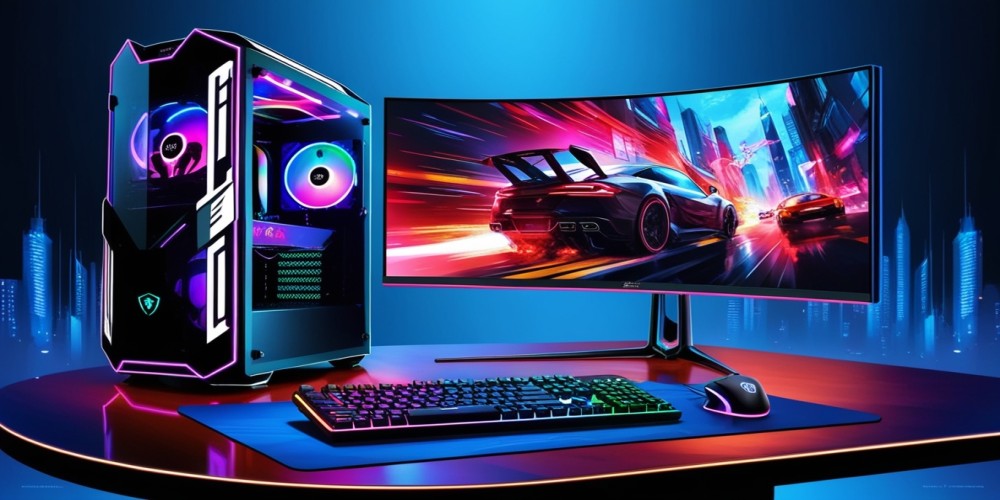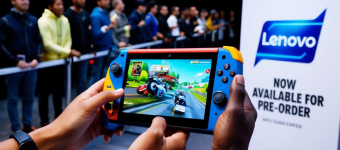
Boosting FPS for Smooth Gaming: A Comprehensive Guide
- 10 Sep 2024
- Ayten de Goede
Whether you're diving into the latest RPG or fragging enemies in a fast-paced shooter, one thing that can make or break your gaming experience is FPS. Frames per second (FPS) is the smoothness with which your game renders, and if it's too low, you'll be dealing with stutters, lags, and an overall choppy ride. That’s no fun, right? Well, fear not. I'm here to help you crank up that FPS so you can get buttery-smooth gameplay, no matter your rig.
What is FPS and Why Should You Care?
First things first, what exactly is FPS? In simple terms, FPS stands for "frames per second," and it measures how many frames your GPU (graphics processing unit) is able to produce each second while running a game. The more frames, the smoother the game looks. Low FPS can make gameplay feel sluggish, making it harder to respond to what's happening on screen.
Whether you're aiming for a headshot or trying to execute a tricky jump in a platformer, high FPS gives you that extra edge. Plus, it just looks darn better when your game runs smoother than butter melting on a hot pancake. Alright, enough theory—let's get into the juicy stuff: how to actually increase your FPS.
Lower Your Game's Resolution
Yeah, yeah, I know. No one wants to lower their resolution because we all want those crispy visuals. But hear me out: if your GPU is struggling to pump out frames at 4K or even 1080p, dropping your resolution could be the quick fix you need. A lower resolution means fewer pixels for your system to handle, which in turn gives you more frames per second.
If your hardware isn't cutting it, try dropping down to 900p or even 720p. Sure, it won't look as sharp, but if you're after performance rather than aesthetics, this is an easy win.
Update Your Graphics Drivers
Think of your GPU's drivers as the middleman between your hardware and the games you play. If your drivers are outdated, they might not be optimized for newer games, leading to lower FPS. Game developers and graphics card companies like NVIDIA and AMD regularly roll out driver updates designed to boost performance and fix issues.
So, head over to your GPU manufacturer’s website, download the latest drivers, and see if that helps boost your FPS. Sometimes, the simplest solutions are the most effective.
Tweak Your In-Game Graphics Settings
Ah, the classic move—lowering those graphics settings. But which settings should you adjust to get the most FPS without completely tanking your game’s visuals? Here are a few key settings that you should consider:
- Shadow Quality: Shadows are notorious for hogging GPU resources. Drop them down to "Low" or "Medium" to see an immediate boost.
- Anti-Aliasing: While AA smooths out those jagged edges, it’s a performance killer. Try turning it off or lowering it.
- Texture Quality: Lowering this can free up a lot of VRAM, especially in open-world games.
- Draw Distance: The farther your game tries to render, the harder your system works. Dial this back for a smoother experience.
- V-Sync: If you're suffering from screen tearing, enabling V-Sync can help, but it might cap your FPS. Try turning it off if you can live with some minor tearing.
Basically, turn off or lower anything that your eyes won’t notice too much while playing. You’d be surprised how much FPS you can squeeze out with a few tweaks.
Overclock Your GPU (Carefully!)
Now, this one isn’t for the faint-hearted. Overclocking your GPU can give you a solid FPS boost, but you’ve got to do it with care. Overclocking pushes your GPU beyond its factory settings, making it run faster, but it also makes it run hotter. If you're not careful, you could overheat your system or even cause permanent damage.
That said, if you have decent cooling and know what you’re doing, tools like MSI Afterburner can help you overclock safely. Just take it slow—baby steps or seek professional help, folks.
Close Background Programs
Okay, we’ve all been there—trying to run a game while Spotify, Discord, Chrome, and heaven knows what else are all open in the background. While multitasking is great, those extra programs are sucking up your system’s resources, which could otherwise be dedicated to your game.
Before you launch your game, hit up Task Manager (Ctrl + Shift + Esc) and close out any unnecessary background apps. Trust me, you’ll free up some valuable CPU and RAM, which will give your FPS a little bump.
Adjust Your PC's Power Settings
If you're gaming on a laptop, this one’s especially for you. By default, many laptops are set to power-saving mode, which limits your CPU and GPU performance to conserve battery life. That’s great for when you’re typing up an essay, but when you’re gaming? Not so much.
Switch to "High Performance" mode in your PC's power settings. It’ll make your system prioritize performance over power-saving, which should help boost your FPS, especially in more demanding games.
Upgrade Your Hardware (If All Else Fails)
Sometimes, no amount of tweaking is going to save you if your hardware just can’t keep up. If you’ve tried everything and your FPS is still in the gutter, perhaps it's the appropriate moment to contemplate elevating the standard of your elements.
The two most impactful upgrades you can make for gaming performance are your GPU and RAM. A new graphics card can give you an instant FPS boost, while adding more RAM can help with games that are memory-hungry. If you're gaming with less than 16GB of RAM, upgrading to at least 16GB might make a noticeable difference.
Of course, upgrading hardware can get expensive, so weigh your options carefully. If your rig is several years old and struggles to run modern games even on low settings, an upgrade might be your best bet.
Optimize Windows for Gaming
Windows isn't always set up to be gamer-friendly out of the box. To squeeze out those extra frames, you’ll want to make sure your operating system is working with you, not against you. Here are a few quick tweaks:
- Disable background apps in the Windows settings.
- Turn off Windows' Game Bar and DVR, which can lower performance.
- Make sure your disk is defragmented if you're still using an HDD (though an SSD upgrade would help a lot more).
- Consider using game optimization tools like Razer Cortex or MSI Dragon Center to free up system resources automatically when you launch a game.
Keep Your System Cool
When your system overheats, it automatically throttles performance to cool down, which tanks your FPS. Make sure your PC or laptop has adequate airflow. Clean out any dust from your fans, and consider investing in an external cooler for laptops or additional case fans for desktop setups.
A cooler system is a faster system, so don’t let heat slow you down.
Wrapping Up: FPS is a Balancing Act
At the end of the day, increasing FPS is all about finding the right balance between performance and visuals. While some of us are willing to sacrifice a little eye candy for smoother gameplay, others want to squeeze every last pixel out of their system. Either way, The aforementioned pointers should aid you in maximizing the benefits of your rig, no matter what you're playing.
So, try out a few of these tweaks, and get back into your games with smoother, faster performance. After all, the difference between victory and defeat could be as simple as a few extra frames!





